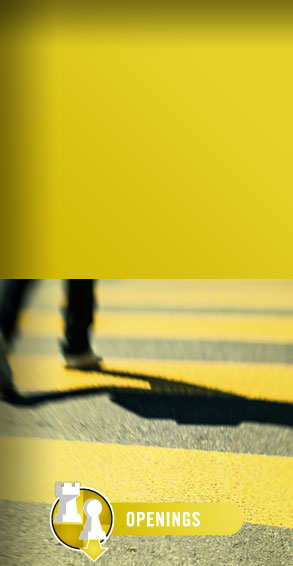Simon Webb was born in 1949 in London. He learned chess at the age of seven,
and became a strong over-the-board player, winning the British Under-18 championship
in 1966, and coming fourth in the European Junior Championship. In 1981 he
took up correspondence chess, where he had his greatest successes. He achieved
IM and GM titles in the BPCF Jubilee Tournament in 1983, his first international
correspondence event. Simon has also represented England at bridge, partnering
his younger brother. He moved to and worked in Sweden as a quality manager.
Last week, at the age of 55, Simon Webb was attacked by his 25-year-old son,
in his fifth floor apartment in the Stockholm suburb of Kallhaell, after returning
by train from Malmö late at night from a tournament. Mr Webb’s wife,
the mother of the assailant, walked in on the pair to see her husband lying
on the floor. He had been stabbed at least 20 times. The son took the couple’s
car and drove it at high speed into a bus shelter in what police believe was
an attempted suicide.
Inspector Hans Strindlund of the Stockholm Police said: “Something happened
because his wife heard screaming and came down and found Mr Webb had been stabbed
and she immediately realised it was the son who did it. There was very much
hate in the way he behaved.” The son, a convicted drug dealer, first
pushed his father then reached for a kitchen knife and dug it into Mr Webb’s
stomach. He then drove off and ploughed into a bus stop by a wall and emergency
services spent hours extracting him from the wreck. But he suffered only a
broken nose and was well enough within a few days to appear in court. He has
been charged with his father’s murder. Mr Strindlund said the motive for
the killing was unclear.
“We were playing together in the finals of the Swedish Chess League
in Malmö,” Per Soederberg, a leading Swedish player, said. “Simon
said goodbye and travelled by train to Stockholm. He must have arrived home
at about 1am, and then had an argument with his son.”
News links
Chess for Tigers
Most chess players know Simon Webb for his book "Chess for Tigers".
Written 27 years ago it became the definitive tournament player's bible. In
recent months Webb had been negotiating with publishers to bring out a new
edition of his book.
 |
Chess For Tigers
By Simon Webb
Oxford University
Press
Oxford, 1978
Illustrations by
Edward McLachlan, 99 pages soft cover |
Here are some opinions on this book:
-
"Next time you need to beat a player, to get more rating points,
think of yourself as a predator, looking for lunch, and see what ideas
come to you. That's what Simon Webb did in his excellent book "Chess
for Tigers." Predators, which I personally enjoyed learning about,
include the Jellyfish and the Crocodile, their methods can also be applied
to chess. – Mark Bowen, Kingston, Jamaica in The
Chess Drum.
-
If you haven't read it, may I suggest you head for the nearest bookshop
and get Chess for Tigers, the greatest chess book for club players ever
written. And if you ever see Simon Webb - he's the one with the stripey
tail and ferocious grin with legions of small tigers worshipping at his
paws - buy him a pint for me. – Alex Bourke, Kings
Head
-
"Written for the average player, Chess for Tigers is a real 'love
it or hate it' book. Most players love it. 98% of the material is absolutely
crucial for weekend tournament players, but the other 2% is why some players
hate the book: Webb provides some cheap tricks to help you win games and
at least one of them is completely illegal according to tournament rules.
– Steve Lopez, ChessBase
Workshop.

Some impressions from the book:

Control of the clock
is one of the most important and most neglected aspects of practical
play. Hundreds of volumes have been written on openings, and yet hardly
anything on how to handle the clock correctly; so I will try to redress
the balance to some small extent in this chapter. Even if you play most
of your chess without clocks, you are bound sooner or later to play in
a club match or local tournament where clocks are used, and then you
will need to make the most of the time available if you are to do yourself
justice.
Ideally you should
apportion your time so that the length of time you think over each move
is related to the difficulty of the move, and so that you use all the
time available without having to rush at the end. This is easier said
than done, and many experienced players, including some grandmasters,
seem unable to avoid getting into time-trouble game after game. As a
result they regularly throw away good positions, and fail to achieve
the results of which they are capable. If this sound like you, then you
have an easy way of improving your results. Stop getting into time-trouble!
Forget about openings, tactics, strategy, and all the rest of your game.
First concentrate on this one aspect of chess, and when you have conquered
it your results will improve automatically. Only then should you return
to improving the rest of your play.
|

The rest is just
technique.' How many times have you heard this cliché? What does it mean?
What sort of technique is involved?
We all fail to win
'won' positions much more often than we should. In fact if we were fully
equipped with the sort of technique the annotators seem to take for granted,
our opponents could resign much earlier than they do in real life. But
even strong grandmasters let clearly winning positions slip from their
grasp from time to time, so clearly the technique involved is far from
easy to apply in practice.
|
"It may be that stronger players actually consider more 'stupid' moves
than weaker ones
- dismissing most of them, but not ruling them out without a glance! It may
be that this is
the only possible explanation for, say, some of Tal's moves." –
Simon Webb
"A game of chess is never drawn until it's drawn. All too frequently
players agree draws in level positions, without realising that there are ways
of winning these positions against a careless opponent." – Simon
Webb
Simon
Webb: Exeter Chess Club: How do Chess-Players Think?
























